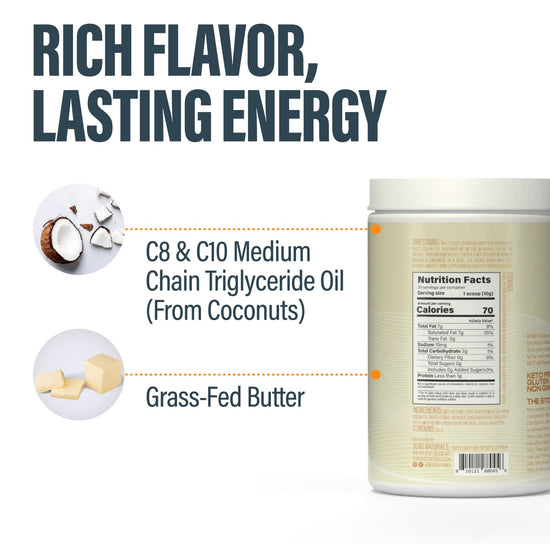Table of Contents
- Introduction
- The Shelf Life of Non-Dairy Creamers
- Factors Affecting Freshness
- Signs of Spoilage
- Storage Tips to Extend Shelf Life
- Conclusion
- FAQs
When it comes to our morning rituals, few things are as comforting as a steaming cup of coffee topped with a splash of creamy goodness. For many, this means reaching for a non-dairy creamer, which has become an increasingly popular choice among those seeking alternatives to traditional dairy products. But how long is non-dairy creamer good for after opening? This is a question many coffee lovers ponder, especially if they've had that carton sitting in the fridge for a while.
In this post, we will explore the shelf life of non-dairy creamers, factors that can affect their freshness, and tips for ensuring you get the most out of your coffee companion. Our goal is to equip you with practical knowledge that can help you enjoy your favorite brews without the worry of spoilage.
Introduction
Did you know that non-dairy creamer was first introduced in the mid-1940s as a way to provide a milk substitute that wouldn't curdle in coffee? Today, these creamers are made from a variety of plant-based ingredients and have become a staple in many households. While they offer a delicious and creamy addition to our coffee, the question of how long they last after being opened is essential for both taste and health reasons.
From soy to almond to coconut-based options, non-dairy creamers come in various forms and flavors. However, their longevity is not uniform and can depend on several factors, including the ingredients, storage conditions, and whether the product has been opened. By the end of this post, you'll have a clear understanding of how long non-dairy creamers last, how to tell if they're still good, and how to maximize their shelf life.
We'll cover the following aspects:
- The shelf life of non-dairy creamers
- Factors affecting freshness
- Signs of spoilage
- Storage tips to extend shelf life
So, let’s dive in and get to the bottom of how long non-dairy creamer is good for after opening.
The Shelf Life of Non-Dairy Creamers
Understanding the shelf life of non-dairy creamers begins with recognizing the various types available in the market. Non-dairy creamers can generally be categorized into two main types: liquid and powdered. Each type has different shelf life expectations.
Liquid Non-Dairy Creamers
Liquid non-dairy creamers are often the most popular choice due to their rich texture and flavor. These creamers can last quite a while if unopened. Generally, an unopened container of liquid non-dairy creamer can last for several months beyond the "best by" date printed on the packaging. However, once opened, the shelf life significantly decreases.
Once opened, liquid non-dairy creamers are typically good for 7 to 10 days when stored in the refrigerator. It's crucial to check the manufacturer's recommendations, as some products may have specific guidelines.
Powdered Non-Dairy Creamers
Powdered non-dairy creamers are another convenient option. These shelf-stable products can last much longer than their liquid counterparts. An unopened container of powdered non-dairy creamer can last up to 2 years when stored in a cool, dry place.
Once opened, powdered creamers can maintain freshness for 3 to 6 months. To maximize their shelf life, it’s essential to store them in a tightly sealed container to prevent moisture and clumping.
Summary of Shelf Life
| Type | Unopened Shelf Life | Opened Shelf Life |
|---|---|---|
| Liquid Non-Dairy | Several months | 7 to 10 days |
| Powdered Non-Dairy | Up to 2 years | 3 to 6 months |
Factors Affecting Freshness
Several factors can influence how long your non-dairy creamer stays fresh after opening. Understanding these factors can help you make informed decisions about how to store and use your creamers.
1. Temperature
Temperature is a significant factor in the freshness of non-dairy creamers. Liquid creamers should always be refrigerated after opening. Keeping them in the main compartment of the fridge helps maintain a consistent temperature, while the door may be too warm due to frequent opening.
For powdered creamers, storage in a cool, dry place is essential. Avoid areas that experience temperature fluctuations, such as near the stove or in direct sunlight.
2. Exposure to Air
Air exposure can lead to oxidation, which can spoil your non-dairy creamer faster. After using your creamer, make sure to close the container tightly to limit air exposure. For powdered creamers, keeping the lid securely sealed can help prevent moisture absorption and maintain quality.
3. Light
Light can degrade the quality of non-dairy creamers, particularly those in clear containers. Whenever possible, store your creamers in a dark cupboard or pantry to protect them from light exposure that can lead to spoilage.
4. Contamination
Cross-contamination is another factor that can affect the longevity of your non-dairy creamer. Using dirty utensils or leaving the container open for extended periods can introduce bacteria that lead to spoilage. Always use clean utensils to dispense your creamer and minimize contact with other foods.
Signs of Spoilage
Knowing how to identify spoiled non-dairy creamer is crucial for your health and enjoyment. Here are some common signs that your creamer may have gone bad:
1. Bad Smell
One of the first signs that your non-dairy creamer has spoiled is an off smell. If it smells sour or has an unpleasant odor, it’s best to err on the side of caution and discard it.
2. Change in Texture
A fresh non-dairy creamer should have a smooth and creamy texture. If you notice clumps, separation, or curdling, these are signs that spoilage has occurred. Liquid creamers should feel silky, while powdered creamers should flow freely without clumping.
3. Off Taste
If you’re unsure whether your non-dairy creamer is still good, a small taste test can help. If it has a sour or off taste, it’s best to avoid using it.
4. Past Expiration Date
While the "best by" date is a guideline for optimal quality, it’s essential to keep in mind that products can spoil before or after this date if not stored correctly. Always inspect your non-dairy creamer for freshness before using it.
Storage Tips to Extend Shelf Life
To ensure you get the most out of your non-dairy creamers, consider the following storage tips:
For Liquid Non-Dairy Creamers
- Refrigerate Promptly: After opening, refrigerate liquid creamers immediately to prevent spoilage.
- Store in the Main Compartment: Keep liquid creamers in the main compartment of the refrigerator rather than the door for a more consistent temperature.
- Seal Tightly: Always close the lid tightly after each use to minimize air exposure.
For Powdered Non-Dairy Creamers
- Store in a Cool, Dry Place: Keep powdered creamers in a cool, dry cupboard away from heat sources and humidity.
- Use an Airtight Container: Transfer powdered creamers to an airtight container if the original packaging is not resealable.
- Avoid Moisture: Use a dry spoon to dispense powdered creamer to prevent moisture from getting into the container.
Conclusion
Understanding how long non-dairy creamer is good for after opening can help you maximize your coffee experience while ensuring your health and safety. Whether you prefer liquid or powdered options, knowing the shelf life, signs of spoilage, and proper storage methods will allow you to enjoy your creamy coffee without worry.
As we embrace our coffee rituals, let’s remember the importance of storing our non-dairy creamers correctly to maintain their deliciousness and quality. By following the tips outlined in this post, we can enhance our daily coffee experience and reduce waste from spoiled products.
FAQs
How long can I keep non-dairy creamer after opening it?
Liquid non-dairy creamers can last about 7 to 10 days after opening, while powdered creamers can last for 3 to 6 months when stored properly.
Can I use non-dairy creamer past its expiration date?
While the expiration date serves as a guideline for optimal quality, it’s essential to check for signs of spoilage like off-smells, changes in texture, or bad taste before using it.
What should I do if I accidentally consume expired non-dairy creamer?
If you consume a small amount of expired non-dairy creamer, you may experience mild stomach discomfort, but it’s generally not harmful. However, if you experience severe symptoms, consult a healthcare professional.
Does non-dairy creamer need to be refrigerated?
Yes, liquid non-dairy creamers should always be refrigerated after opening to maintain freshness. Powdered non-dairy creamers do not require refrigeration but should be stored in a cool, dry place.
How can I tell if my non-dairy creamer has gone bad?
Check for signs such as a sour smell, changes in texture (like clumping or curdling), or an off taste. If any of these signs are present, it’s best to discard the creamer.
By staying informed about the shelf life and storage practices for non-dairy creamers, we can ensure that every cup of coffee is as delightful as intended. Happy brewing!
Written by:

Butter MCT Oil Creamer
BUBS Butter MCT Oil Creamer (formerly Halo Creamer): Scientifically-Backed Brain and Body Fuel
BUBS Butter MCT Oil Creamer is your go-to for clean, fast-acting energy and focus, no crash included. It blends creamy grass-fed butter with fast-acting MCT oil powder (C8 and C10) to kickstart your day and keep you sharp. The MCTs go straight to work, giving your brain a quick boost while the grass-fed butter supports digestion and gut health.
Together, they help curb cravings, keep you feeling full longer, and support steady energy throughout the day—perfect for fueling your mornings or powering through the afternoon slump.
Starts at $36.00
Shop

